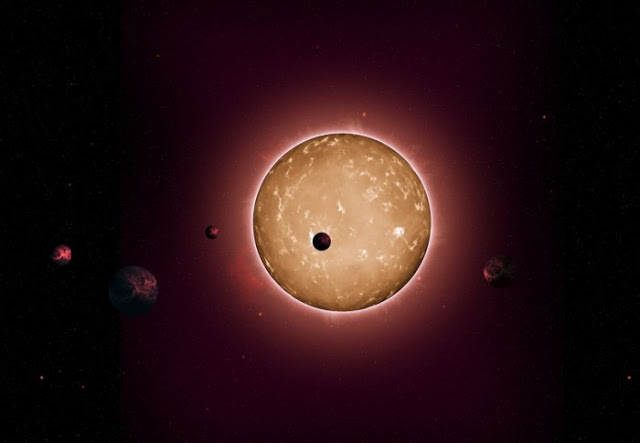

| Online: | |
| Visits: | |
| Stories: |

| Story Views | |
| Now: | |
| Last Hour: | |
| Last 24 Hours: | |
| Total: | |
Stifling Atmospheres Limit Number of Habitable Planets
When looking for planets that could harbor life, scientists look for planets in the ‘habitable zones’ around their stars – at the right distance from the stars to allow water to exist in liquid form. Traditionally, this search has focused on looking for planets orbiting stars like our Sun, in a similar way to Earth.
Credit: NASA
However, recent research has turned to small planets orbiting very close to stars called M dwarfs, or red dwarfs, which are much smaller and dimmer than the Sun. M dwarfs make up around 75 per cent of all the stars in our galaxy, and recent discoveries have suggested that many of them host planets, pushing the number of potentially habitable planets into the billions.
This month, both the TRAPPIST and Kepler planet-hunting telescopes have announced the discovery of multiple near-Earth-sized planets orbiting M dwarf stars, some within the habitable zones.
New research from Imperial College London and the Institute for Advanced Studies in Princeton, published in the Monthly Notices of the Royal Astronomical Society, has revealed that although they orbit smaller and dimmer stars, many of these planets might still be too hot to be habitable.
The scientists suggest that some of the planets might still be habitable, but only those with a smaller mass than Earth, comparable to Venus or Mars.
Dr James Owen, Hubble Fellow and lead author of the study from the Institute for Advanced Studies in Princeton, said: “It was previously assumed that planets with masses similar to Earth would be habitable simply because they were in the ‘habitable zone’. However, when you consider how these planets evolve over billions of years this assumption turns out not to be true.”
It was known previously that many of these planets are born with thick atmospheres of hydrogen and helium, making up roughly one percent of the total planetary mass. In comparison, the Earth’s atmosphere makes up only a millionth of its mass. The greenhouse effect of such a thick atmosphere would make the surface far too hot for liquid water, rendering the planets initially uninhabitable.
However, it was thought that over time, the strong X-ray and ultraviolet radiation from the parent M dwarf star would evaporate away most of this atmosphere, eventually making the planets potentially habitable.
The new analysis reveals that this is not the case. Instead, detailed computer simulations show that these thick hydrogen and helium envelopes cannot escape the gravity of planets that are similar to or larger in mass than the Earth, meaning that many of them are likely to retain their stifling atmospheres.
However, all is not lost, according to the researchers. While most of the M dwarf planets that are Earth-mass or heavier would retain thick atmospheres, smaller planets, comparable to Venus or Mars, could still lose them to evaporation.
Dr Subhanjoy Mohanty, the other study author from the Department of Physics at Imperial College London, said: “There are hints from recent exoplanet discoveries that relatively puny planets may be even more common around red dwarfs than Earth mass or larger ones, in which case there may indeed be a bonanza of potentially habitable planets whirling around these cool red stars.”
Ongoing ground- and space-based searches, and new space missions to be launched in the near future, should provide a definitive answer to this question as well as other questions about the potential suitability of these planets for life.
Contacts and sources:
Hayley Dunning
Source:



